Compiled and adapted for the web site by Ray Beaufoy, July 2025.
The introduction of the Saab 93 and the Saab Sonett at the New York motor show in 1956.

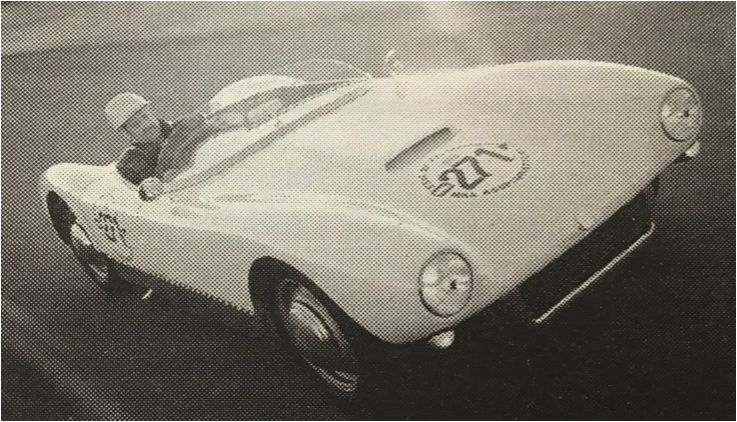
The introduction of Saab in the USA
In 1956, Saab had registered a succession of international rally victories throughout Europe with the Saab 93, a sporty two-door saloon. Rally successes throughout Europe soon began to create interest for the Saab 93 with motoring enthusiast eager to buy the sporty saloon for themselves.
Sales figures soon started to increase from 3400 produced cars in 1953 to 6100 cars in 1955 – further afield this popularity did not go unnoticed, and Saabs management began to seriously consider marketing the Saab brand even in the USA.
Whilst all of this was going on a two-seater sports car was being secretly developed in Trollhättan, which, with its sleek lines and similar drive train as the 9-3 was considered as a suitable partner in showrooms across the USA .Both cars were therefor shown at the 1956 International Automobile Show, held at the newly built New York Coliseum.


Although the Saab 93 saloon lacked the spaciousness that typical American manufacturers were producing at that time, Saabs management were a little unsure how the vehicle would be accepted by American motorists and if they had indeed a saleable product?
To test the water, the decision was taken to show the vehicle at the New York auto show whilst also entering the Saab 93 in the prestigious Great American Rally the following November. If successful, this would further enhance recognition for the Saab brand and strengthen the companies export plans.
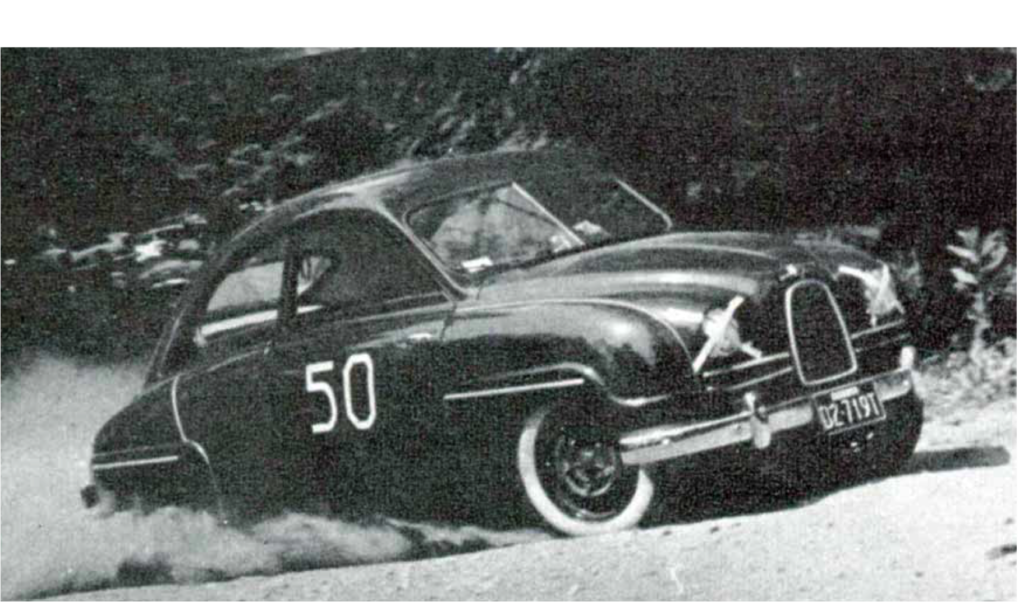
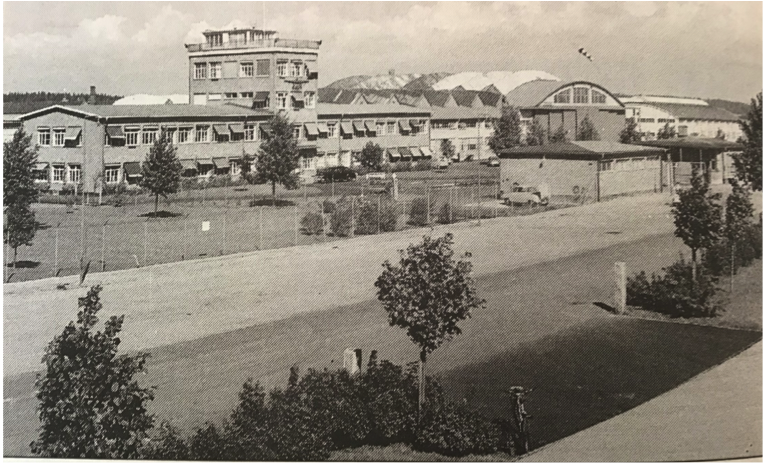
First importer of Saabs in the USA
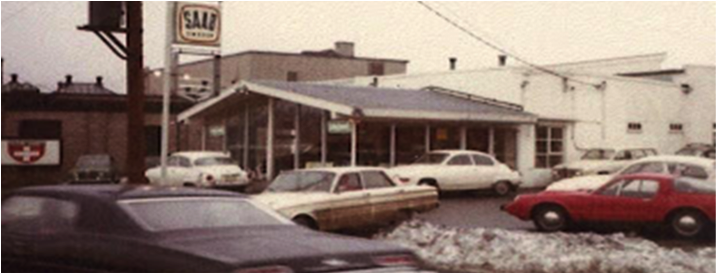
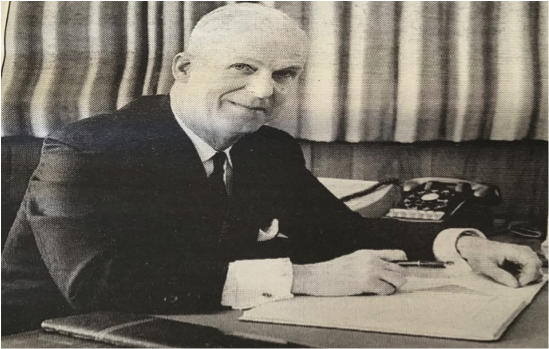
The North Atlantic states were selected as the first sales trial area and a depot was established at Hingham, Massachusetts, some fourteen miles south of Boston.
It was here newly arrived cars shipped from Sweden were garaged and prepared for sale.
Rally success in the US market.
Saabs management team also considered it vitally important to establish a reputation for Saab on the American rally scene.
In November 1956, SAAB Motors, Inc., now under the direction of Mr Ralph T. Millett – (who had represented the SAAB Aircraft Company in the United States since 1947) -registered three standard specification SAAB 93´s in the Great American Mountain Rallye.
Under the direction of Rolf Mellde, head of SAAB’s competition department in Sweden, the venture was a huge success and generated strong interest for the Saab 93 and the Saab brand name itself.
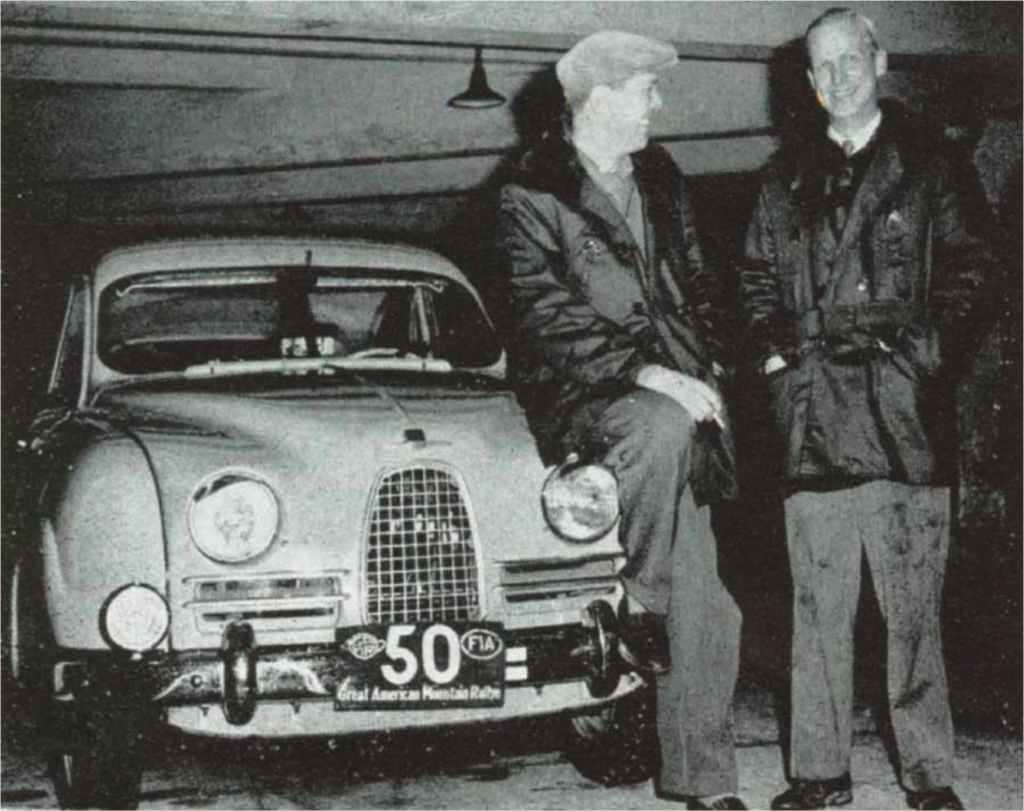
The SAAB rally team headed by Bob Wehman andpartnered by Louis Braun, won both the overall class and team awards in what was (then) considered to be undoubtedly one of the world’s toughest events.
The surprising victory shot SAAB into the headlines. The Saab 93 soon became a hot subject of discussion in motoring circles throughout the USA.
Final Rallye results
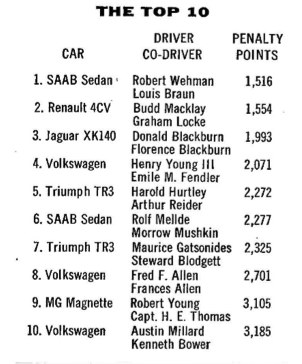
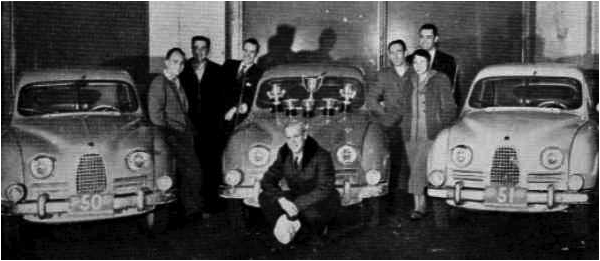
The Rallye Competitors
Fresh snow made the gruelling 1,500-mile, three-day winter race even more challenging for the sixty-three competitors, which included many American brands, as well as Austin-Healey, Renault, Triumph, Volkswagen, MG, Jaguar, Volvo, and Mercedes-Benz.
After three days of driving on extremely hazardous icy roads with snow a foot and a half high, most drivers unfortunately had great difficulty driving in such conditions and did not make the finishing post. Only one American car finished among the top 20 – and to everyone’s surprise, first place went to one of the new Saab cars.
Wehman piloted his Saab 93 to victory, followed by Mellde in sixth place, while the third Saab finished seventh. Saab took the team award and finished first, third and fourth in its class. Great publicity accompanied Saab’s outstanding performance in the rally, with much credit attributed to Saab’s remarkable front-wheel handling, effective cold climate heating system and strong, well proven body shell.
Word soon reached car enthusiasts for the new import from Sweden. The Road & Track magazine was duly impressed noting, ‘The performance has done more to win respect than a million dollars’ worth of advertising´.
Saabs arriving in the USA and the establishment of the Service school.
A few weeks after the announcement of SAAB’s first rallying victory in the USA, two hundred and fifty SAAB 93’s were shipped from Sweden and off- loaded at the dockside in Boston, Massachusetts whilst Saabs Rolf Mellde and his staff began to organise the first SAAB service school at Hingham.
Mechanics and staff attending the service school were taught how to service the car in detail utilising modern visual aids showing sectionalized mock-ups of the car and its unique engine.
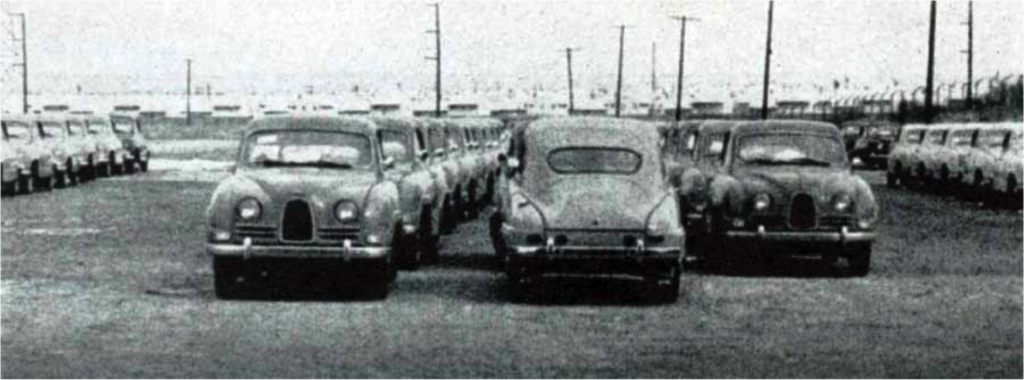
Growth in car sales
By the end of 1957, SAAB had some sixty sales outletswho had sold 1,500 cars. All had reported that they had a backlog of orders.
Quite naturally, the Great American Mountain Rally victory attracted widespread attention, people were queueing up to purchase a Saab. The car became a firm favourite as SAAB’s list of competition victories began to build up.
Rarely has any car caused such a sensation- The SAAB was selling itself!
New production facilities in Trollhättan
The increasing U.S. demand for the car was responsible for the accelerated completion of a new automobile factory in Sweden. Instead of selling 3,600 SAABs in the U.S. in 1959, the quota was raised to 5,000.
In Florida, a new preparation and factory depot had been set up in Jacksonville. Dealers were later appointed in the Mid-West and to ease the load at Hingham, a SAAB storage and preparation depot was opened at Carteret in New Jersey.
More spare parts were imported and stockpiled together with the establishment of additional service schools. By the end of 1959 , 40 new dealerships had been added, giving Saab a total of 160 , however, despite all this success, the SAAB management team remained tentatively cautious about nationwide marketing and remained very resolute in their conception of sales promotion and vehicle engineering-rigidly sticking to their policy of selling only in areas where they had already established supply lines.
Quality service and availability of spare parts
Despite the arrival of the more compact cars from American manufacturers , SAAB were scheduled to surpass its projected sales targets .Spare parts valued at over one and a half million dollars ensured that Ralph Millets requisite of providing Saab customers with a close at hand service organisation performing quality repairs and having spare parts availability was achieved!
Improvements in Saab cars
Over the early years SAAB dealers in the USA played a large part in various improvements that have been introduced into new SAAB vehicles.
SAAB Motors president Ralph Millet regularly sent out questionnaires to his dealers asking them to report customer suggestions and complaints, and to add their own ideas for improving the product.
Since the first Saab was sold in America, at least thirty-one improvements had been included in the Saab 93 without extra costs to the buyer.
These are listed below:
Heater and defroster/Key starter/Full instrumentation/Larger fuel tank/Safety-padded dashboard/Windshield washers/Self-cancelling turn signals/Adjustable lounge seats /Safety sun visors/Vanity upholstery /Foam- rubber upholstery/Undercoating/Safety belt fittings/Safety glass all around/More powerful engine/Wrap-around rear windows/Wider 3-passanger back seat/Air circulations vents/Opening side rear windows/Double size locking glove compartment/Larger radiator/Larger brakes/Theft-proofing ignition lock/Double acting shock absorbers/Front arm rest/Adjustable rear seats/Dome light/Front hinged doors/Larger air scoop /Improved door locks/23% more luggage space.
As a successful aircraft manufacturer, Saab already had an international network of sales and parts distributors.
In the U.S., Saab’s parts-buying agent was Ralph Millet, ex-pilot, aeronautical engineer, and graduate of Massachusetts Institute of Technology. Millet’s company, Independent Aeronautical, was based in New York and had close communications with Svenska Aeroplan Aktiebolaget (Swedish Aircraft Company) known as Saab, based in Trollhättan, Sweden.
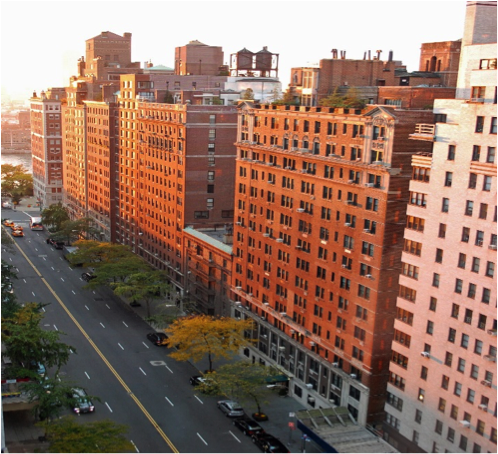

Ralph Millet quickly formed a new company, Saab Motors Inc., first as a subsidiary of Independent Aeronautical, and then taken over by the Swedish Saab parent company.
Millet became president of Saab USA having its headquarters at a small office on West 57 th. Street, in Manhattan.
From Trollhättan to Manhattan
Saab’s first major model evolution of the original two-cylinder 92 was the 1956 Saab 93, equipped with a 33-hp, three-cylinder, two-stroke engine. A partially cut-away model – revealing the unusual engine, front-wheel-drive, and sectioned bodywork – was exhibited at the Auto show along with a road-ready car.
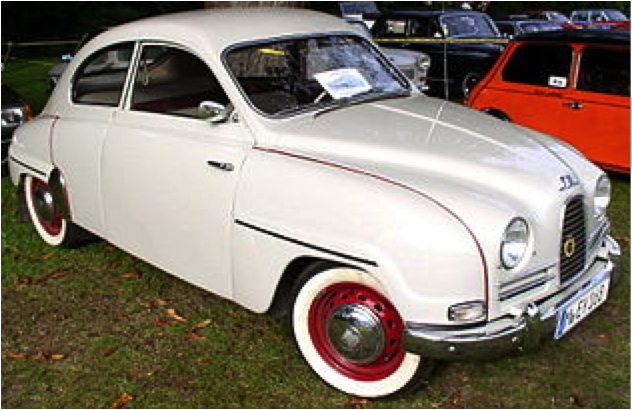
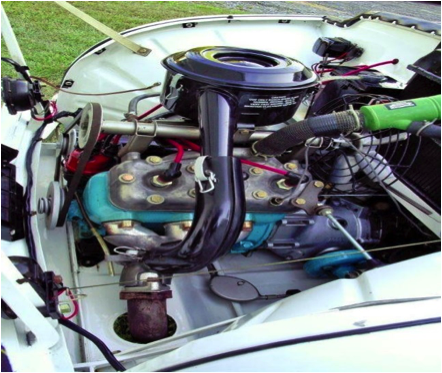
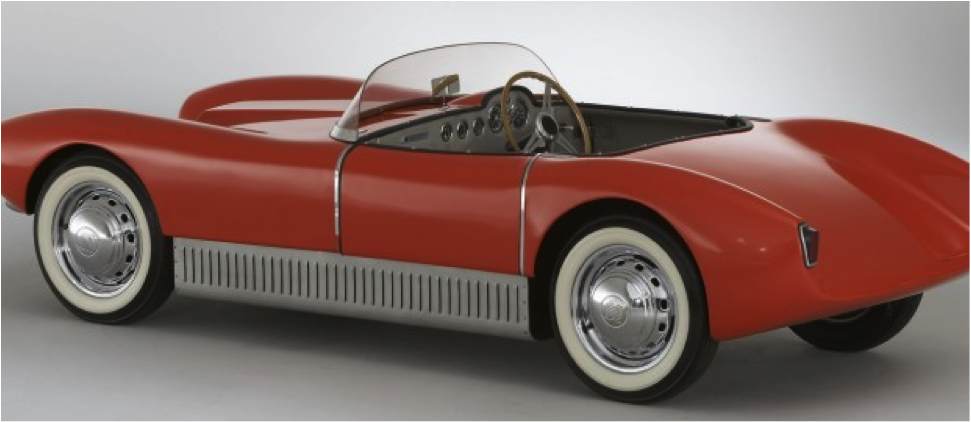
The Sonett Super Sport was a limited-production roadster originally intended for competition- only six examples were built. As an original Saab “concept car,” the Sonett Super Sport was shown at many of the auto shows throughout the US.
In later years, the sports car Sonett theme was further refined and exported throughout the USA.
Saab had established itself.
In 1957, the first full year of U.S. sales, 1,410 Saab 93s were sold, 14-percent of Trollhättan’s total output. By the end of 1959, some 12,000 Saab 93s had been shipped to the U.S., making it Saab’s biggest export market.
The two-stroke engine was well suited for winter operation, and owners revelled in the fact that it always seemed to start, even on very chilly days. Salespeople would promote the fact that there were only seven moving parts to this simple engine: the crankshaft, three pistons and three connecting rods.
Saab dealers were quick to promote the lifetime warranty too; the engine was also covered as long as the car belonged to the original owner.
Individualistic and enthusiastic owners
The typical Saab customer was said to be a meticulous, technical person who appreciated the cars technical attributes. This ranged from people involved in some form of engineering profession, even business owners and professional people were attracted to the car.
A survey conducted by Saab in early 1957 revealed that doctors were the largest solitary group of customers, followed by sales executives and aircraft industry employees. In fourth place was a significantly large group of amateur racing drivers.
The more powerful variant- The Granturismo 750
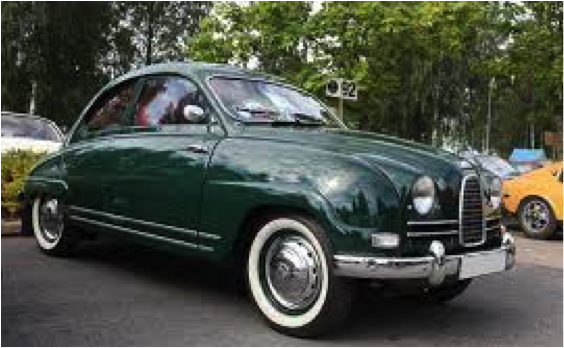
Saab’s international rally heritage was the inspiration for the Granturismo 750, a special model created primarily for the American market after much persistence from Ralph Millet.
Introduced at the 1958 New York Auto Show, the GT750 had additional sport-luxury features such as a wood-rim steering wheel, sport seats, driving lights, tachometer, and a rally timer, plus twelve more horsepower.
Footnote
The introduction of the Sonett series into the USA will be covered in a later article.